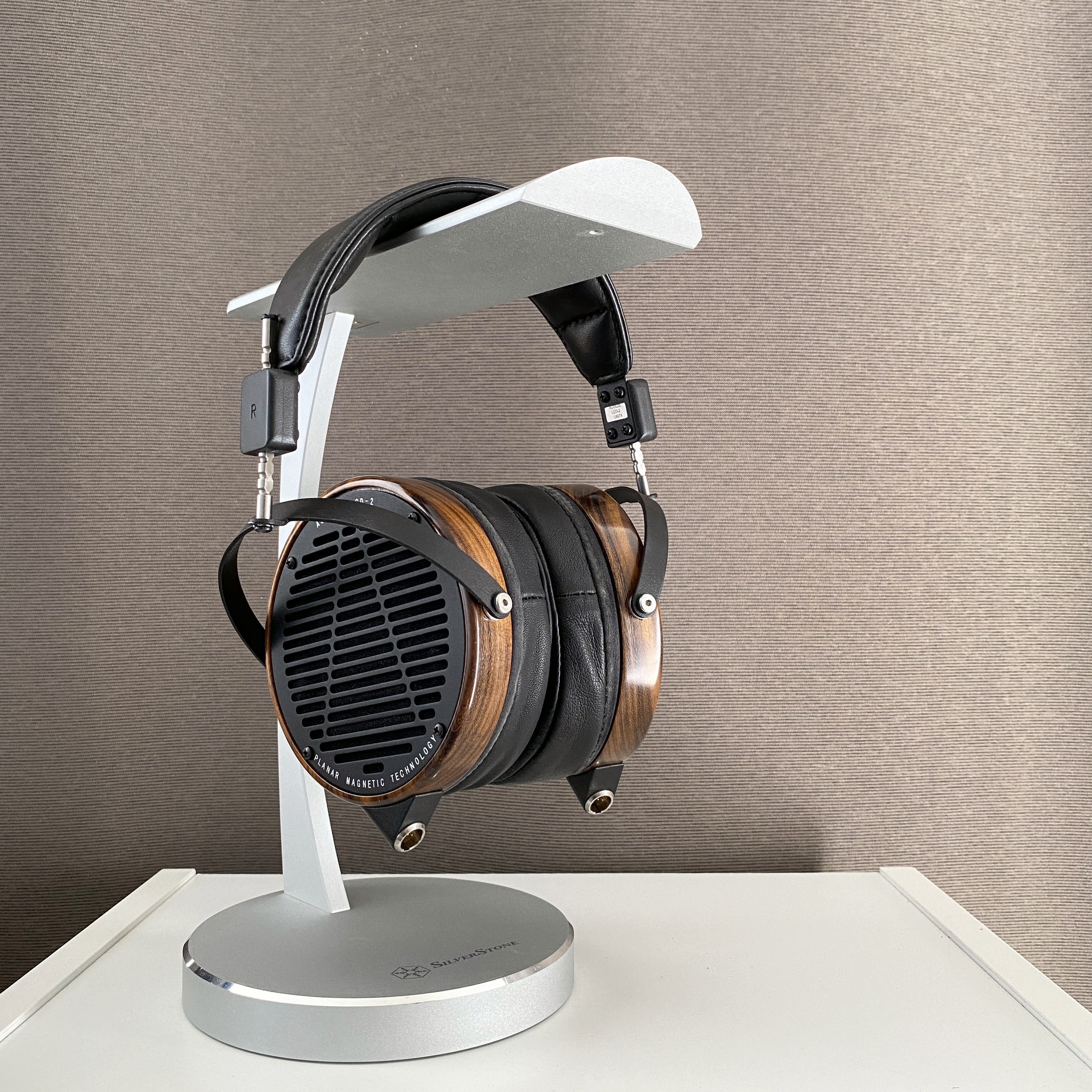
It’s a vibe…
Intro
The Audeze LCD-2s have been known for their smooth and lush sound. While they may not offer the most accurate instrumental timbre, there is a captivating ‘effortlessness’ about them, as many have noted, making them particularly enjoyable for certain genres.
Since around 2013, Audeze introduced what they call ‘fazors’, essentially wave guides to enhance soundwave directivity. Market reactions seem to have been mixed, with some claiming that while fazors improve the treble, they take away the magic of the Audeze sound. Is this true?
This pair I’m reviewing, built post-2016, features the latest driver according to my research (hats off to Metal571 for his excellent explanation of the Audeze LCD series, you can read it on Reddit). It’s also worth noting that the ear pads are made of non-memory foam – a critical factor that shapes how headphones sound.
Specs & Comfort
Price: US$ 995, AU$ 1699
Transducer size: 106 mm (advertised)
Transducer type: planar magnetic
Earpad size: 120*80*33-25mm
Earpad fitting mechanism: glued-on
Sensitivity: 100 dB/mw @1kHz
Impedance: flat, 74Ω @1kHz (measured)
Connector: dual 4-pin mini-XLR
Weight: 572 grams (rosewood)
Clamping force: medium-low
Headband swivel: YES (approx. 60°)
Comfort: 3/10 (super weighty)
Mesurement & Sound

link to the frequency response measurement & more comparisons
Tonal balance:
Overall, the LCD-2F sounds quite distinct from its non-fazored counterpart. The treble clarity has been taken up a notch noticeably. Vocals are not as relaxed but maintain adequate articulation. Certain sibilance tones are more prominent than in the non-fazored version. Still, there’s the Audeze house sound that you can immediately feel, with mids polished and grains reduced.
The bass is weighty, thumpy, and reaching deep linearly. By ‘linear’, I mean it’s devoid of odd colourations, not that it’s flat or lacklustre. In terms of quantity/proportion, the bass leans towards the thicker side, with its quantity lifted above the mids and highs. It may not be the most nimble or the most tactile planar bass, but it has a style of its own. By comparison, the pre-fazor LCD-2 slams with a bit more authority. Audeze’s newer tuning, like that in the MM-100, is tighter and ‘faster’, but lacking in quantity and the scale of impact.
The midrange is warm and lush, yet fairly articulate compared to Audeze’s earlier offerings. It’s still unmistakably coloured, but the upper-mids are not as recessed as in some other models, like the pre-fazor LCD-3 or those with memory foam pads.
This is also reflected from the measured frequency response – the upper mids and the ear gain region are not too far below the Harman 2018 target curve. Although my rig tends to measure with a slightly higher treble energy compared to GRAS’s damped high-frequency couplers, it’s evident that with the non-memory foam pads and the fazors, the ear gain level is markedly more present. Electric guitar distortion may come across as a bit lacking ‘bite’, but it should still sound decently clear.
The main colouration comes from the 4-5kHz hole, which renders a discernible sense of polished, velvety smoothness to the mids. This colouration is typically enjoyable on vocal tracks, though it can make certain instruments, like violins, lack fine texture and grain.
Overall, the mids are not as relaxed as the non-fazor version but maintain an adequate position from the listener. Some find the mids on the LCD-2 to be distant. I can see what they mean but I don’t entirely agree. Given the prominence of the lower mids, the base tone range of vocals, the mids typically feel somewhat closed-in. It’s just that elements of breaths and bites (which the upper mids are responsible for) have been polished off considerably. This gives the impression of a vocalist singing upfront in a gentler, soft-spoken style, like Frank Sinatra, with Aretha Franklin representing the opposite end of the spectrum.
The treble is noticeably brighter and airier than the pre-fazor version. Yet, compared to planars from other brands like the Hifiman HE6se or the Moondrop Para, the LCD-2F is still unquestionably a dark headphone. High-pitched instruments, such as cymbals, tambourines, or piccolos, rarely sound aggressive or harsh unless mastered ridiculously bright. The ordinary tracks, these instruments can come off as a tad veiled.
All in all, it’s a tonal improvement over the pre-fazor version. I find the extra treble clarity and sheen a positive addition to balance the warm and lush tuning of the LCD-2 mids.
However, some Audeze fans might already find it slightly sibilant, as the LCD-2F does have a bit of excess energy in the mid-treble and upper-treble. These peaks, though minor, can be noticeable when music is mastered to enhance those frequencies. I must stress again that the LCD-2F is not a bright headphone, but this uneveness can make certain tones stand out more, especially at higher volumes. Personally, it’s not an issue for me on 90% of the tracks.
Other qualities:
- Soundstage and Imaging:
The soundstage is quite good. Contrary to some opinions, I find the Audeze LCD-2F decently spacious in terms of stage width. Yes, the vocals can be closed-in at times, but it can also sound distant depending on the track, especially in live recordings. It’s not as wide as the HE1000 V2 or the HD800, but it’s wider than something like the Hifiman Sundara.
In terms of depth, it’s less impressive. Midrange sounds can come off as somewhat indistinct in spatial definition. The sense of layering, for example in orchestral recordings, is not very pronounced. Elements in the mix tend to blend together more or less. Perhaps this could be termed an ‘organic’ presentation. By comparison, the Hifiman HE6se offers a much stronger sense of depth definition.
- Clarity:
The sense of clarity is satisfactory, though perhaps behind others at the price point. Compared to the pre-fazor LCD-2, the 2F offers considerably enhanced resolution, especially in higher frequencies. However, in the grand scheme of things, the LCD-2F is mediocre, especially among planars.
Compared to the Focal Elear or the Fiio FT5, the LCD-2F may seem slightly more resolving. But against the Hifiman HE6se, it is falling behind. Even Audeze’s latest budget offering, the MM-100, offers similar levels of clarity. So, the bottomline here is, the LCD-2F is not a detail monster headphone, if that’s what you’re after.
- Dynamics and Impact:
The dynamic qualities of the LCD-2F are quite good overall, but with nuances. While the sense of impact and slam is typically very good, provided you achieve a good seal, the dynamic contrast is generally less distinct than models like the HD800 or the HE6se. This may be due to the highly damped design of the LCD-2 diaphragm. This is particularly noticeable at low volumes, where the LCD-2F can often sound a bit ‘flat’.
The advantage of its highly damped design is that the attack and decay are typically very clean. In terms of impact, the LCD-2F is very good, hitting with weight and authority. The glued-on design and full leather ear pads enhance bass performance with a closed front volume. Swapping to perforated leather or suede pads will decrease the sense of slam, while bringing more linearity to the midrange and highs. I used to do this with the pre-fazor LCD-2, but I don’t think it’s suited for the LCD-2F, given the differences outlined above.
Conclusion and value:
With all that said, do I prefer the fazored version over the original? To me, they are more of a side-grade. It really depends on your priorities. Some may prefer the pre-fazored version for its ‘Audeze magic’. However, the fazored version, with its improved clarity, is also a viable option for those who favour a more linear sound.
Priced at US$ 995/AU$ 1699, the Audeze LCD-2 Fazor isn’t for everyone, given its weighty fit and sound. The overall tuning is decent, quite a bit less esoteric than Audeze’s previous headphones. I find it enjoyable for some specific genres, but it may not represent the best value for money. Today’s market is very competitive. There are just alternatives that offer similar levels of overall sound quality at a significantly lower cost. However, if the sound profile, aesthetics, and design of the LCD-2F appeal to you, then it could be a worthy investment.
Pros: weighty, deep bass; improved clarity and articulation over earlier versions; lush and smooth midrange colourations; decent stage width.
Cons: coloured midrange; inaccurate instrument timbre; uneven treble ; heavy weight; pads are inconveniently glued-on.
Value Grade (assessment on value, NOT sound quality):
Notes on EQ
The Audeze LCD-2F could benefit significantly from EQ. Once you adjust the uneveniss in the upper mids and highs, the tonal improvement is immediately clear. The ticky thing here is to restore a linear upper-mids performance while not boosting the lower treble too much. This is tricky as I tend to avoid high-Q filters. It may also be a good approach, alternatively, to leave a bit of a dip there, just so you know you’re listening to a pair of Audezes. 🙂
NOTE: when worn extremely forward ie. with your ears in the front portion of the pads, the upper-mids and lower highs become a lot more present. I don’t usually wear them that way, but if you do, you may want to factor this into the EQ profile. See the measurement section for positional variations.
My EQ setting for this headphone:
Preamp: -7.0 dB
Filter 1: ON PK Fc 30 Hz Gain 6.5 dB Q 0.500
Filter 2: ON PK Fc 150 Hz Gain -1.5 dB Q 0.500
Filter 3: ON PK Fc 570 Hz Gain -1.3 dB Q 2.000
Filter 4: ON PK Fc 1400 Hz Gain -1.5 dB Q 3.000
Filter 5: ON PK Fc 2300 Hz Gain 3.0 dB Q 2.500
Filter 6: ON PK Fc 4300 Hz Gain 1.5 dB Q 3.000
Filter 7: ON PK Fc 4800 Hz Gain 4.0 dB Q 3.000
Filter 8: ON PK Fc 5850 Hz Gain -3.0 dB Q 3.000
Filter 9: ON PK Fc 11500 Hz Gain -2.0 dB Q 3.000
If you would like to EQ to the Harman Target, there’s an handy AutoEQ function built in Squiglink that you could use as a starting point (I personally do not recommend doing so – ideally you should adjust the filters to suit your own hearing especially in the treble).
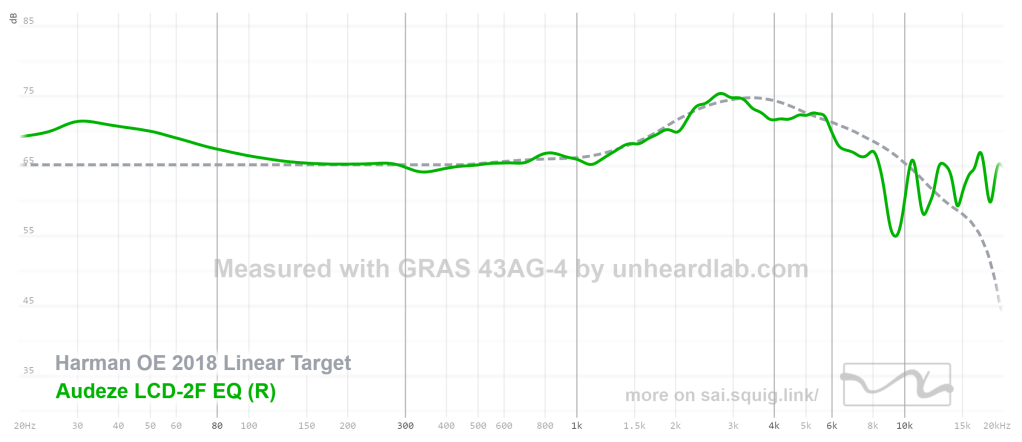
MEASUREMENTS
Frequency Response Average (unsmoothed):

Bass extension cutoff is 10hz instead of 20hz on the extende frequency response measurement, so as to fully capture frequencies which though may not outside of the ‘audible range’, may be felt by bones and muscles and enhance the sense of ‘impact’. The response is obtained by an average of 5-6 positional variations. The graph is unsmoothed to better show the peaks and dips that might be audible
Positional Variation:
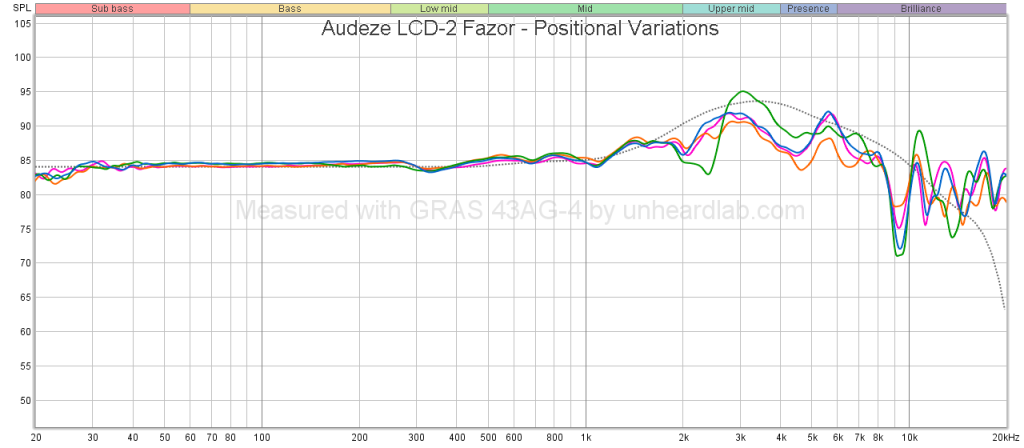
This graph shows how the tonality might be affected when you wear the headphones differently on the head.
NOTE: when worn extremely forward ie. with your ears in the front portion of the pads, the upper-mids and lower highs become a lot more present, see the green curve. I don’t usually wear them that way, but if you do, you may want to factor this into the EQ profile.
Leakage Test:
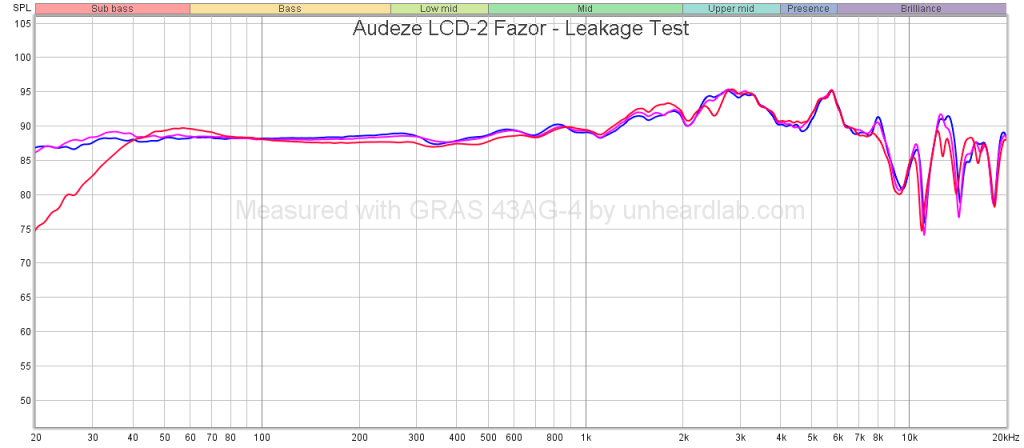
This graph demonstrates how a small leakage (simulated using thin-armed glasses) can result in FR change.
Impulse Response:
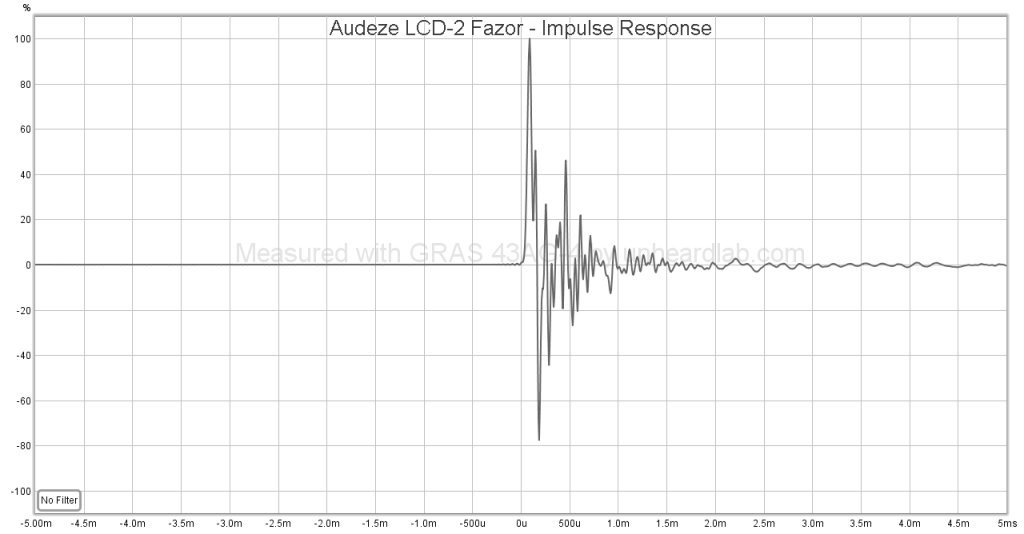
Impulse response contains information about transducer movement when a test tone is played.
Channel Matching:
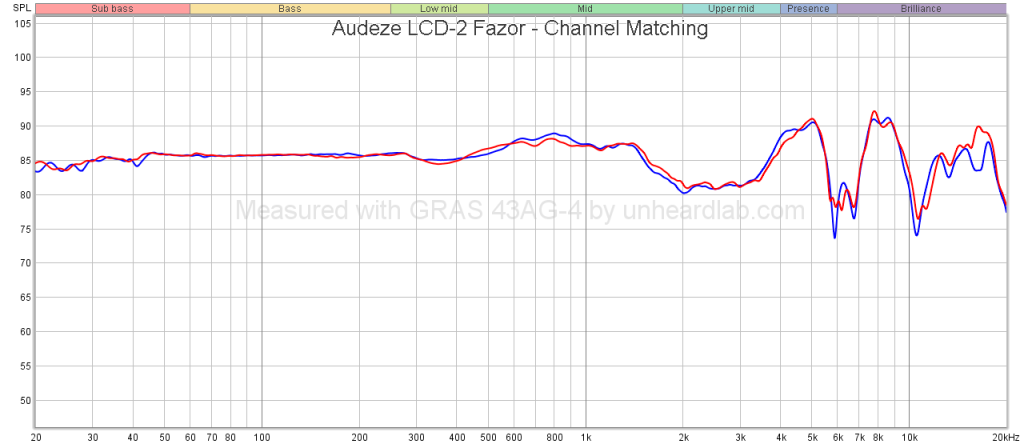
Channel matching graphs DOES NOT RELATE TO SOUND PROFILE.
a specialised configuration is used to capture channel differences to mitigate the interference from positioning on rig and the asymmetricity in GRAS pinnae design (legacy of KEMAR).
the Left (blue) and Right (red) channels are measured on a flat plate coupler with an IEC60318-4 ear simulator.
Electric Phase & Impedance:
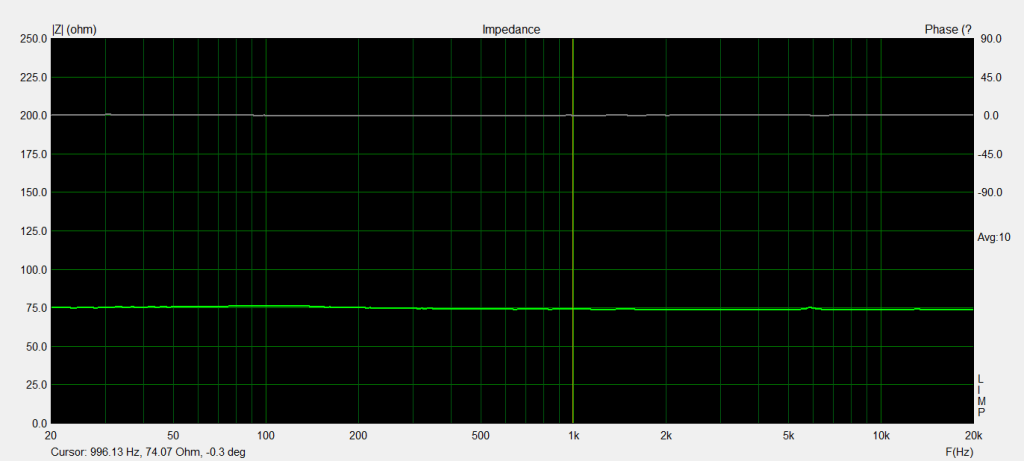
The above graph shows the measured impedance (green) and electric phase (grey).
END OF THE ARTICLE
Disclaimer: This review is not sponsored or endorsed by any business or related entity. The headphones reviewed are my own unless stated otherwise. Any links or recommendations included are purely informational and do not involve any financial affiliation or endorsement on my part.
EDIT 02/03/24: fixed typos and a few expressions that can be unclear
